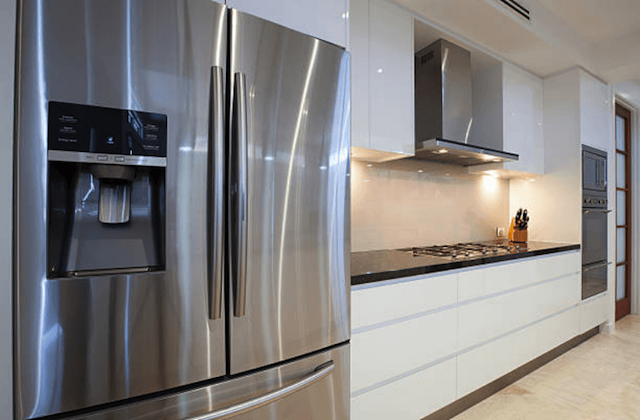Why is My Refrigerator Ice Maker Not Working?

Tru Appliance Repair offers refrigerator repair service, including professional services to fix ice makers that are not working. Learn about common ice maker issues below:
Ice makers are perhaps one of the most convenient inventions ever. This is a small luxury many people certainly take for granted. Ice makers are simple machines that don’t have a lot of parts that could go wrong with them.
Like with any repair, there are a few basic things that should be reviewed before thinking the worst. And, it’s nice to know, if necessary, you can replace an ice maker without replacing the entire fridge, dependent on the brand and model. First, let’s review a few of the causes for an ice maker failure.
If the ice maker is making ice but it is not ejecting it it is usually a mechanical problem vs. an electrical problem. This can occur when reorganizing things around in the freezer, you might jam the control switch up or down. Often the ice maker might get blocked with something else, including a piece of ice. So, look to see if there is something blocking this part from working correctly.
Before starting the steps of clearing out the freezer, ensure the ice maker is on. This is done by pulling the control arm in the down position. From time to time, moving things around in the freezer might put the switch in the off position. If the the switch is clear, then there may be ice stuck inside the ice maker or it is not receiving a good connection.
Check the Control Arm
When the switch is down and there’s ice but it’s not ejecting it, there might be an electrical or mechanical problem. This is going to require some more diagnosing. Ready to get started? First, we must inspect the electrical connection. This can become unplugged from the back of the freezer when moving or shifting the freezer contents.
To check this, first unplug the refrigerator and pull it out away from the wall. Then, turn off the freezer’s water supply valve. Locate the connection on the rear of the inside of the freezer. Essentially this is what connects the ice maker into the freezer unit. Ensure that it is actually plugged in the right way.
Next, remove any ice that is in the ice maker itself. This can be completed by pouring in a small amount of water to help to get ice that is inside of there out.
Once done, turn on the power to the refrigerator and then turn on the ice maker. It might take the solenoid a couple of seconds to engage and fill the mold. After the mold is 100% full, wait 4-5 hours to see if you’ve cleared the issue.
Check for Frozen Lines
Other ice maker issues that may cause your ice maker to not produce ice are frozen water lines. The water lines might be blocked with frost. This is an easy fix.
First, unplug the fridge and locate the shut off valve. Shut the water off and get a hair dryer to warm the line or just let the refrigerator sit shut off for a few hours until the line is thawed.
Some brands and models that have a water filter that can clog or ice up. For these cases, locating the water filter is the first step. Then repeat the same process that was done for the iced water line.
If an ice maker isn’t making big enough pieces of ice, there’s a problem with the settings. To adjust the settings, take the top part of the cover of the ice maker off and find a simple dial that has plus and a minus symbols. For this process, you could need a flat head screwdriver.
ADDITIONAL REFRIGERATOR RESOURCES
- Refrigerator Noisy
- Refrigerator Water Dispenser Not Working
- Refrigerator Not Cooling
- How Does a Refrigerator Work?
Copyright ©2024 Tru Appliance Repair
